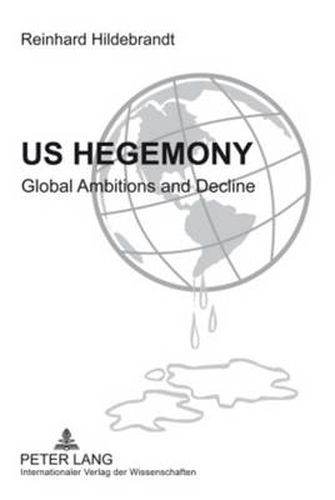Readings Newsletter
Become a Readings Member to make your shopping experience even easier.
Sign in or sign up for free!
You’re not far away from qualifying for FREE standard shipping within Australia
You’ve qualified for FREE standard shipping within Australia
The cart is loading…






With the end of the ‘East-West’ conflict in 1990, an entirely new constellation seemed to emerge for the first time in the history of mankind. This was perceived by the power elite in the USA as a useful challenge to lend its - until then territorially restricted - hegemony a global dimension. From the perspective of the US elites (Francis Fukuyama), a period of indefinite American control over the rest of the world, in which there would be no more scope for potential rivals to emerge, would characterize the end of history. But some years later, the USA had to accept that the dual hegemony it had built up together with the Soviet Union was fundamental to the continued existence of American hegemony. Its inability to sustain a global hegemony revealed itself in the severe setbacks it suffered in the three wars waged in Iraq, Afghanistan and against the so-called international terrorists. Undeterred by the USA’s imminent isolation, influential US experts insisted that US policies were still in line with the US’ general perception of its role in the world: firstly to work for the good of the world and, secondly, to exercise its military might even when the rest of the world opposed it. Ignored for a long time by these very experts were the emergence of the interregional Asian triangle (China, India, Russia), Europe’s reorientation and, in consequence, the USA’s relegation as a hegemonic power.
$9.00 standard shipping within Australia
FREE standard shipping within Australia for orders over $100.00
Express & International shipping calculated at checkout
Stock availability can be subject to change without notice. We recommend calling the shop or contacting our online team to check availability of low stock items. Please see our Shopping Online page for more details.
With the end of the ‘East-West’ conflict in 1990, an entirely new constellation seemed to emerge for the first time in the history of mankind. This was perceived by the power elite in the USA as a useful challenge to lend its - until then territorially restricted - hegemony a global dimension. From the perspective of the US elites (Francis Fukuyama), a period of indefinite American control over the rest of the world, in which there would be no more scope for potential rivals to emerge, would characterize the end of history. But some years later, the USA had to accept that the dual hegemony it had built up together with the Soviet Union was fundamental to the continued existence of American hegemony. Its inability to sustain a global hegemony revealed itself in the severe setbacks it suffered in the three wars waged in Iraq, Afghanistan and against the so-called international terrorists. Undeterred by the USA’s imminent isolation, influential US experts insisted that US policies were still in line with the US’ general perception of its role in the world: firstly to work for the good of the world and, secondly, to exercise its military might even when the rest of the world opposed it. Ignored for a long time by these very experts were the emergence of the interregional Asian triangle (China, India, Russia), Europe’s reorientation and, in consequence, the USA’s relegation as a hegemonic power.